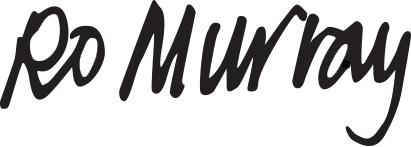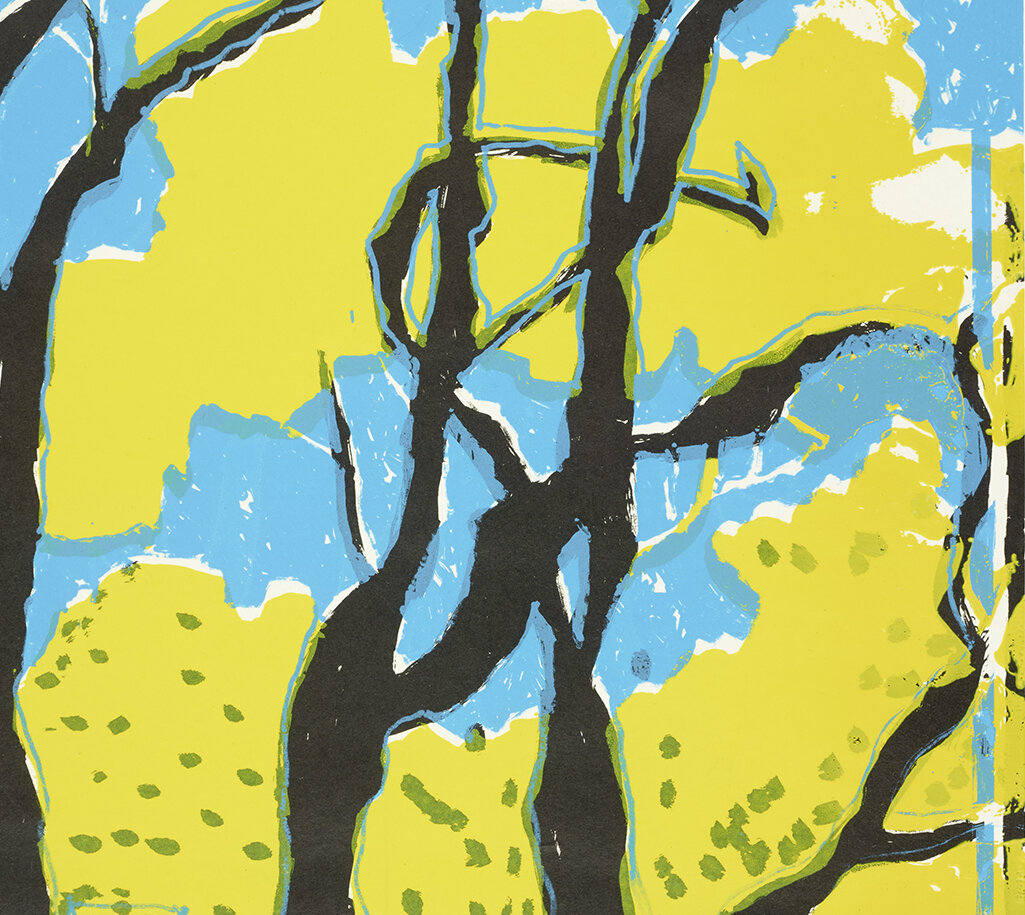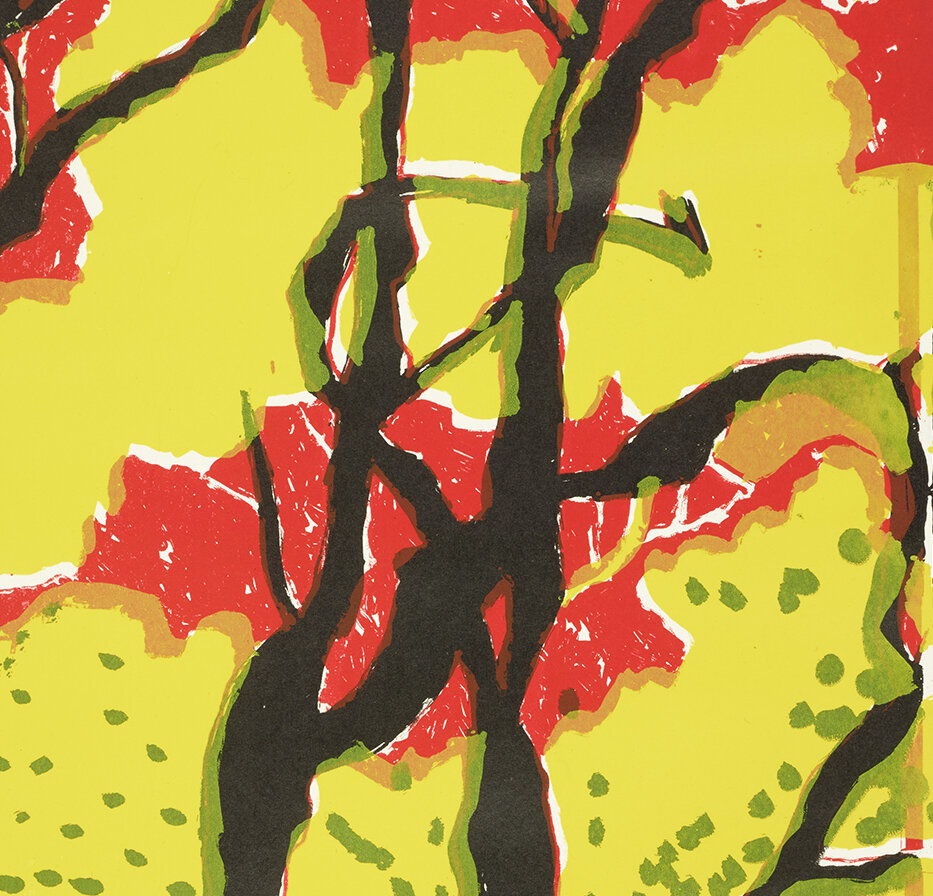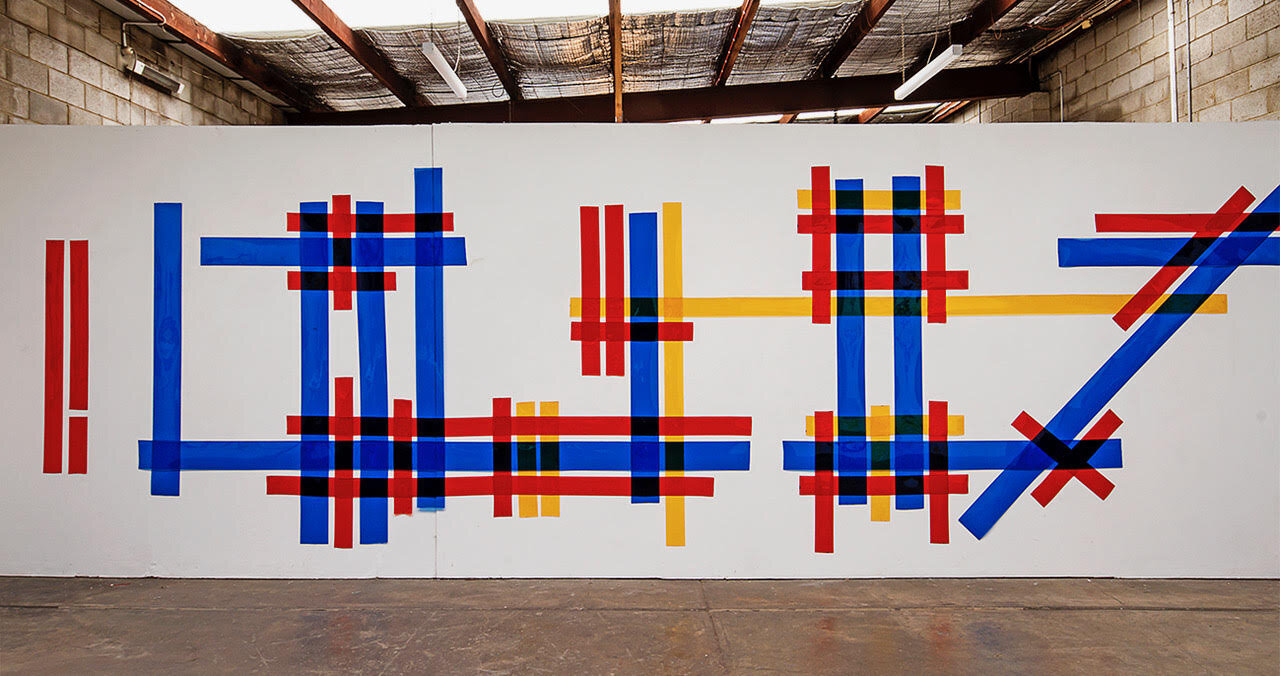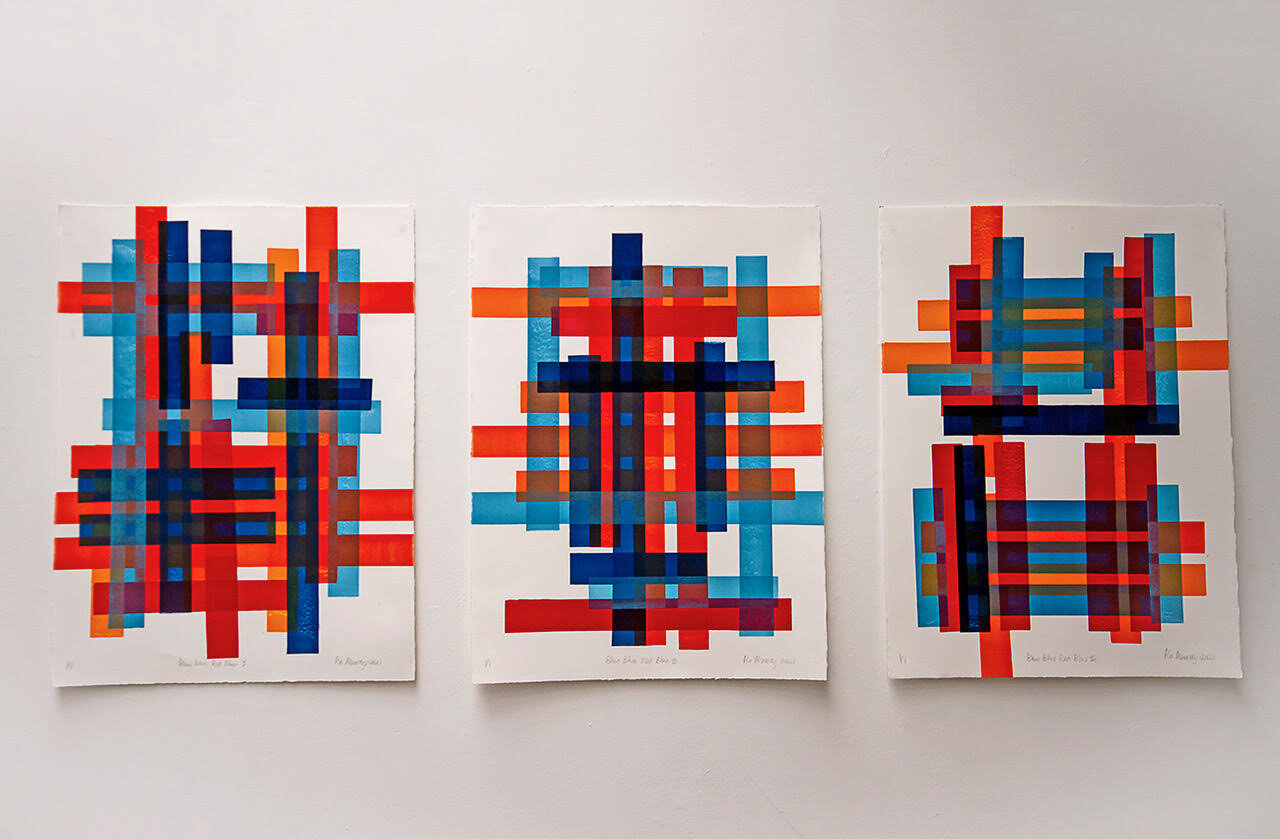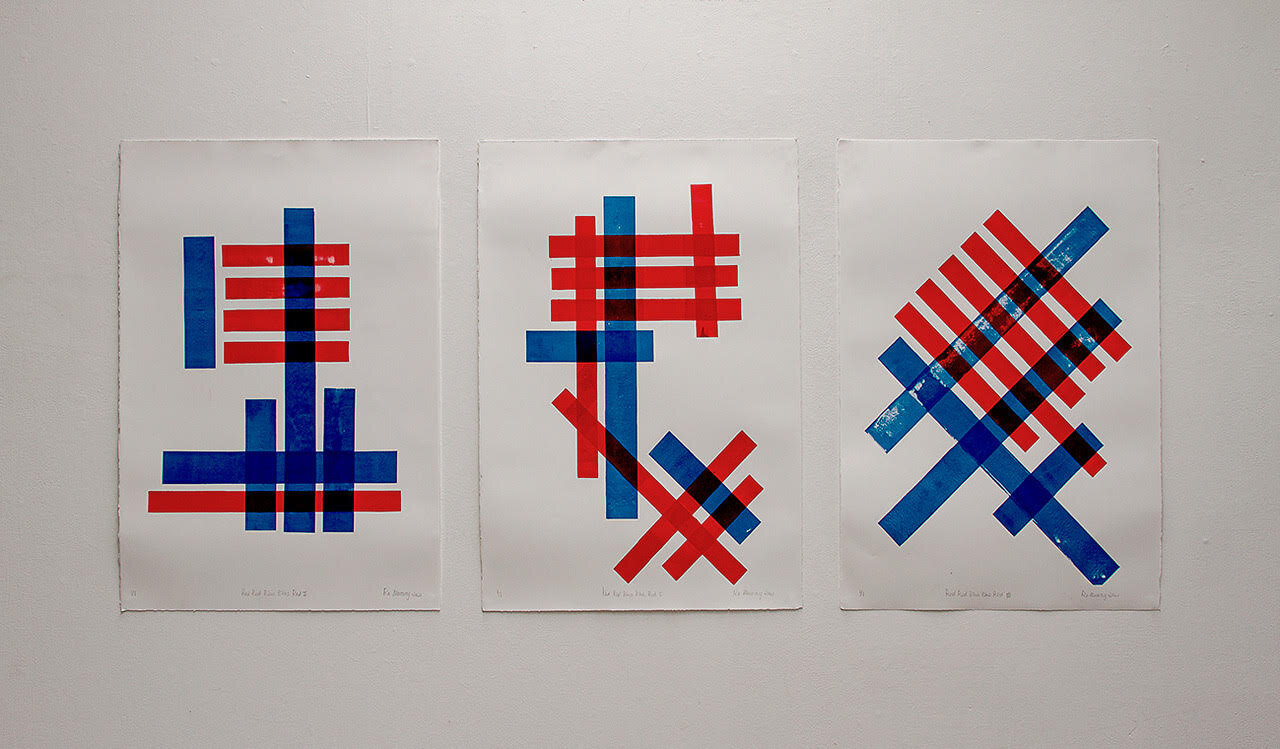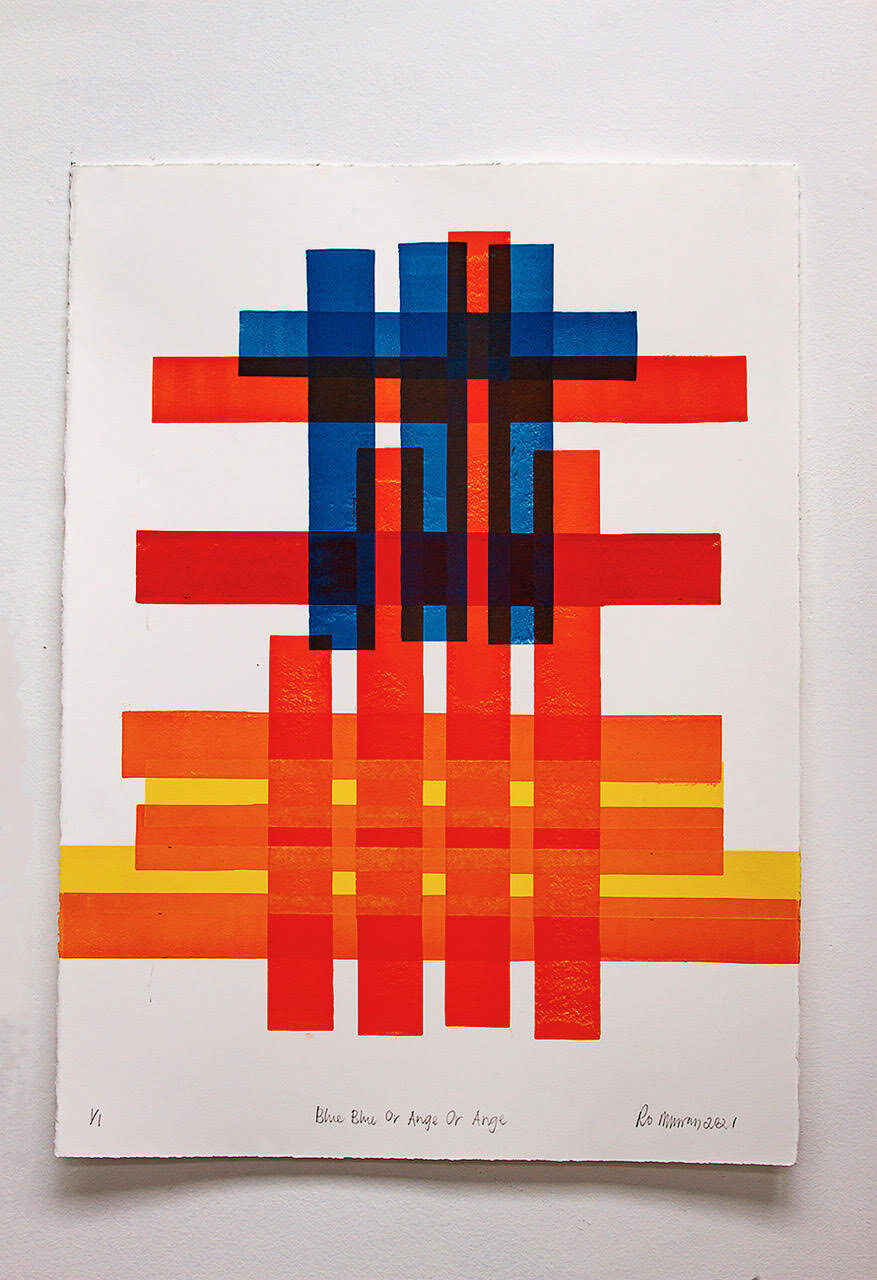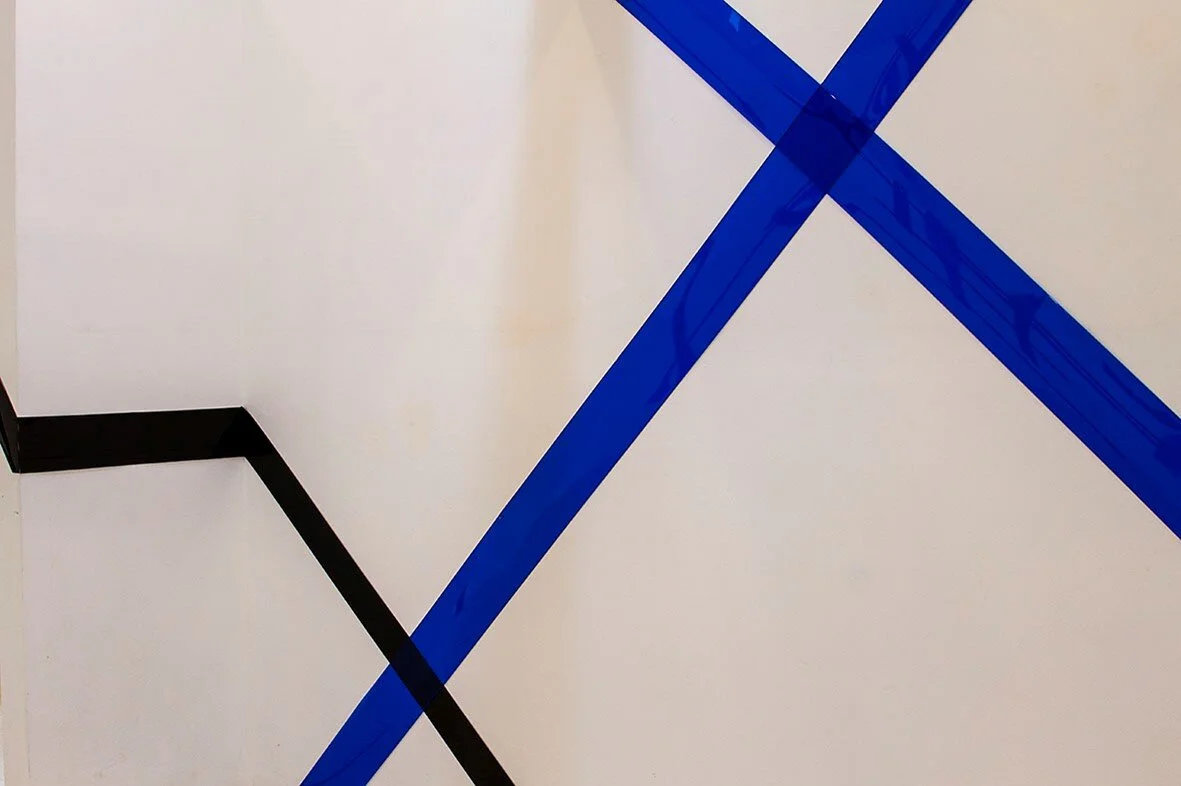RedRed BlackBlack BlackBlack Blue is an installation named after a poem. Abstract Poem, written by Robert Lax (1967) is itself a response to the paintings of Ad Reinhardt. On a white page, the poem appears as a slightly unstable vertical tower of words. With more white space than black text, much more is unsaid than said. It is a poem to be seen. Read aloud, as it will be to accompany the exhibition, it evokes the sensations of colour; of rolling reds held against and between the clipped drips of black and of blue, spoken colour as visualisation, pattern and syllabic syncopation. Three colour-words, four columns, and an internal variation form the rhythmic structure.
The parallels between Murray’s work and Lax’s poetry are apparent; not only as a material, visual echo of language, but also in the clear intent to work reductively. In common there is a distillation of communication by using the simplest elements and weighing the spaces between them. Whether single colours or single words, they are presented with measure, equality and economy.
Lax has been described as a Concrete poet, yet also as an Abstract Minimalist. Murray’s previous geometric works were eloquent with the language of protest. Eschewing the lyrical and the expressive in favour of the blunt reality of colour, line and plane, paradoxically, creates an opening, the space that Murray will work in to create this installation. She describes it as a way of working within strict parameters, through a process that is open to chance. Are Lax’s words sufficient to convey the myriad nuances of a visual art – involving scale, character of edges, straightness of line, texture of material and adaptations to the vagaries of site? These are the details that betray human interaction and continue Reinhardt’s discourse on the divide between art and life.
Lisa Sharp, December 2019
